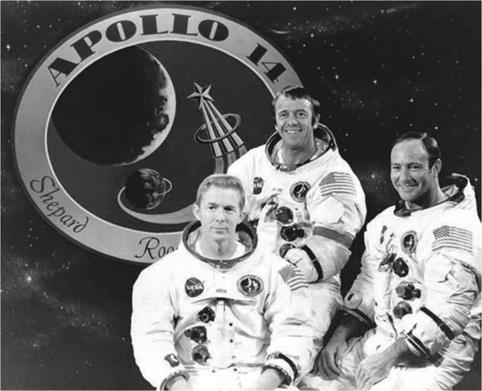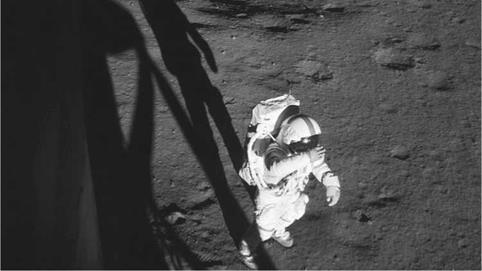FLY ME TO THE MOON
Although his surgery was successful, Shepard had lost his chance to fly on Gemini, and there were serious doubts that he would ever fly into space again. To remain part of the astronaut cadre, he had earlier accepted an interim appointment as Chief of the Astronaut Office, giving him a major influence in the training and assignment of his fellows. Eventually, his never-say-die attitude would see him regain active astronaut status, and he promptly launched a determined campaign for a slot aboard a manned Apollo lunar mission.
|
The Apollo 14 crew of Stuart Roosa, Alan Shepard, and Edgar Mitchell. (Photo: NASA) |
Almost a decade after his historic flight aboard Freedom 7, Shepard was launched into space for a second and final time on 31 January 1971 as the commander of the Apollo 14 mission. Aged 47, he became the oldest of the twelve men to place their boot prints in the lunar dust. Along with Edgar Mitchell, he spent 33 hours exploring the Fra Mauro terrain. He freely admits that when he stepped off the Lunar Module Antares for the first time and stood on the lunar surface he shed tears of wonderment and joy.
At the end of their final excursion, Shepard impishly pulled out a club head which he had secretly brought along, and clipped it onto the long handle of a tool. He then dropped a golf ball onto the surface and attempted a modified one-armed back – swing. “Unfortunately, the suit is so stiff I can’t do this with two hands,” he reported back to Earth, “but I’m going to try a little sand trap shot here.” Using only his right hand he whacked the first of two balls for a distance he later said with a broad aviator’s grin was “miles and miles.”
|
Alan Shepard stands on the surface of the Moon. (Photo: NASA) |












